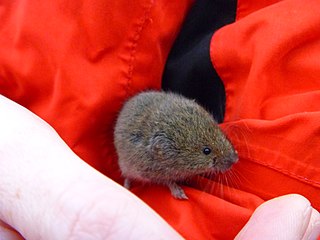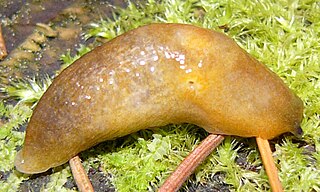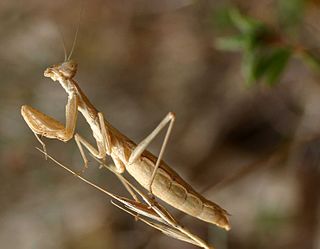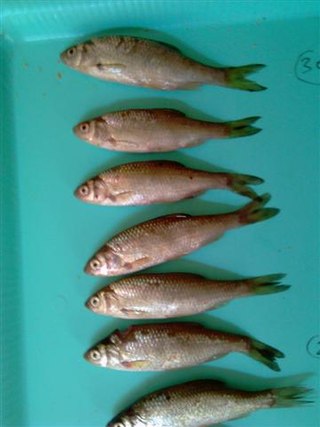
Herring are various species of forage fish, mostly belonging to the family of Clupeidae.

The macaques constitute a genus (Macaca) of gregarious Old World monkeys of the subfamily Cercopithecinae. The 23 species of macaques inhabit ranges throughout Asia, North Africa, and Europe. Macaques are principally frugivorous, although their diet also includes seeds, leaves, flowers, and tree bark. Some species such as the long-tailed macaque will supplement their diets with small amounts of meat from shellfish, insects, and small mammals. On average, a southern pig-tailed macaque in Malaysia eats about 70 large rats each year. All macaque social groups are arranged around dominant matriarchs.

The guenons are Old World monkeys of the genus Cercopithecus. Not all members of this genus have the word "guenon" in their common names; also, because of changes in scientific classification, some monkeys in other genera may have common names that include the word "guenon". Nonetheless, the use of the term guenon for monkeys of this genus is widely accepted.

The Bavarian pine vole is a vole from the Austrian, Italian, and Bavarian Alps of Europe. It lives in moist meadows at elevations of 600 to 1,000 meters.
A near-threatened species is a species which has been categorized as "Near Threatened" (NT) by the International Union for Conservation of Nature (IUCN) as that may be vulnerable to endangerment in the near future, but it does not currently qualify for the threatened status.

Malacolimax tenellus is a species of air-breathing land slug, a shell-less terrestrial gastropod mollusk in the family Limacidae.

The wildlife of Tunisia is composed of its flora and fauna. It has 84 species of mammals and 375 species of birds. Tunisia is well documented for its addax and dama gazelle population.
Liechtenstein's pine vole is a species of rodent in the family Cricetidae. It is found in central and eastern Europe, from northern Italy through to Austria, Slovenia, Serbia and Croatia.

Ameles decolor is a species of small praying mantis native to the west Mediterranean and North Africa. A. decolor was first described by entomologist Domenico Cyrillo in 1787, and its current classification was established in 1976 by Karl Harz and Alfred Peter Kaltenbach. A. decolor presents as a small, light brown mantis with females tending to appear larger than their male counterparts. The mating patterns of A. decolor are considered some of the most complex amongst praying mantises, with males presenting two different styles of courtship. Their habitat favours shrublands, grasslands, and wooded areas.

Ameles spallanzania, common name European dwarf mantis, is a species of praying mantis.

Ameles is a wide-ranging genus of praying mantises represented in Africa, Asia, and Europe.
Ameles assoi is a species of praying mantis native to Morocco, Tunisia, and Spain.
The spined dwarf mantis is an extinct species of praying mantis that was endemic to Italy.
Ameles gracilis is a species of praying mantis endemic to the Canary Islands.
The western broad-toothed field mouse is a species of rodent in the genus Apodemus from southeastern Europe. It is related to A. mystacinus, which occurs further to the east. It is found in Albania, Bosnia and Herzegovina, Bulgaria, Croatia, Greece, Kosovo, Montenegro, North Macedonia and Serbia.

Leucos basak, the Albanian roach, Dalmatian roach or Croatian roach, is a species of freshwater fish in the family Cyprinidae. It is found in Albania, Bosnia and Herzegovina, Croatia, and Serbia and Montenegro.

The Mediterranean long-eared bat, also known as Kolombatovic's long-eared bat or the Balkan long-eared bat, is a species of vesper bat ranging from Italy east through the Balkans east to Syria, and south to Jordan.
The limbless fine-lined slider is a species of skink found in Queensland in Australia.












